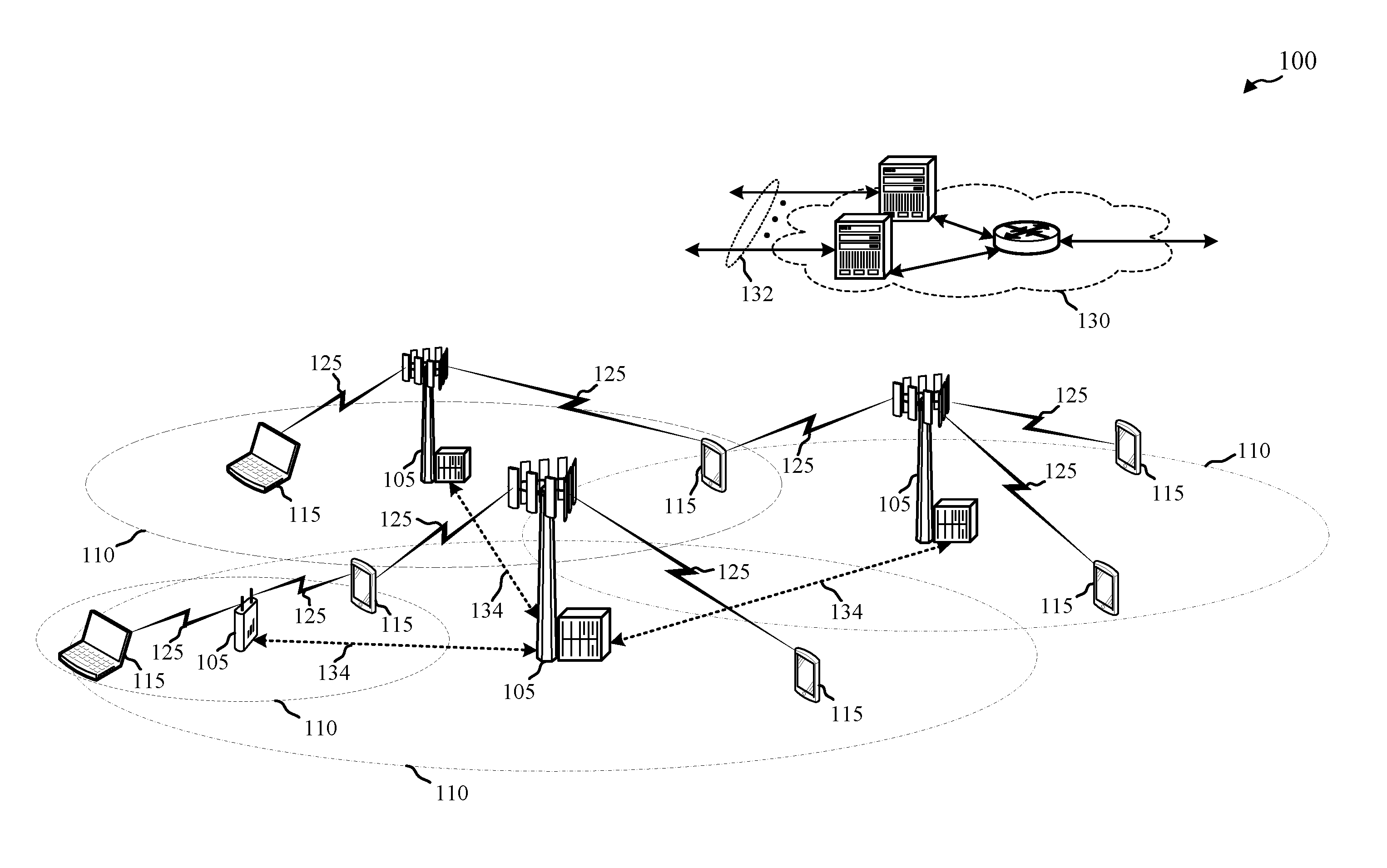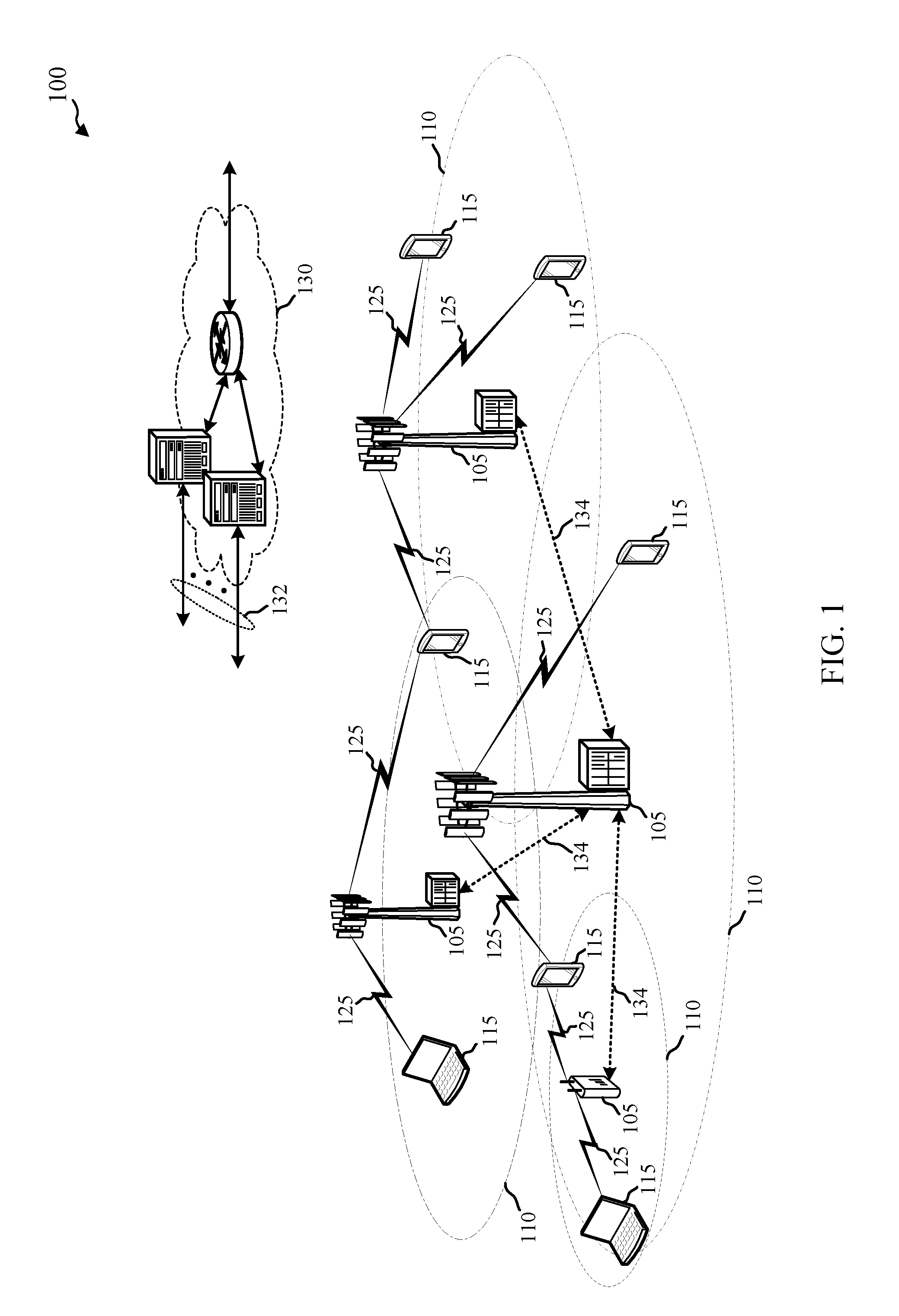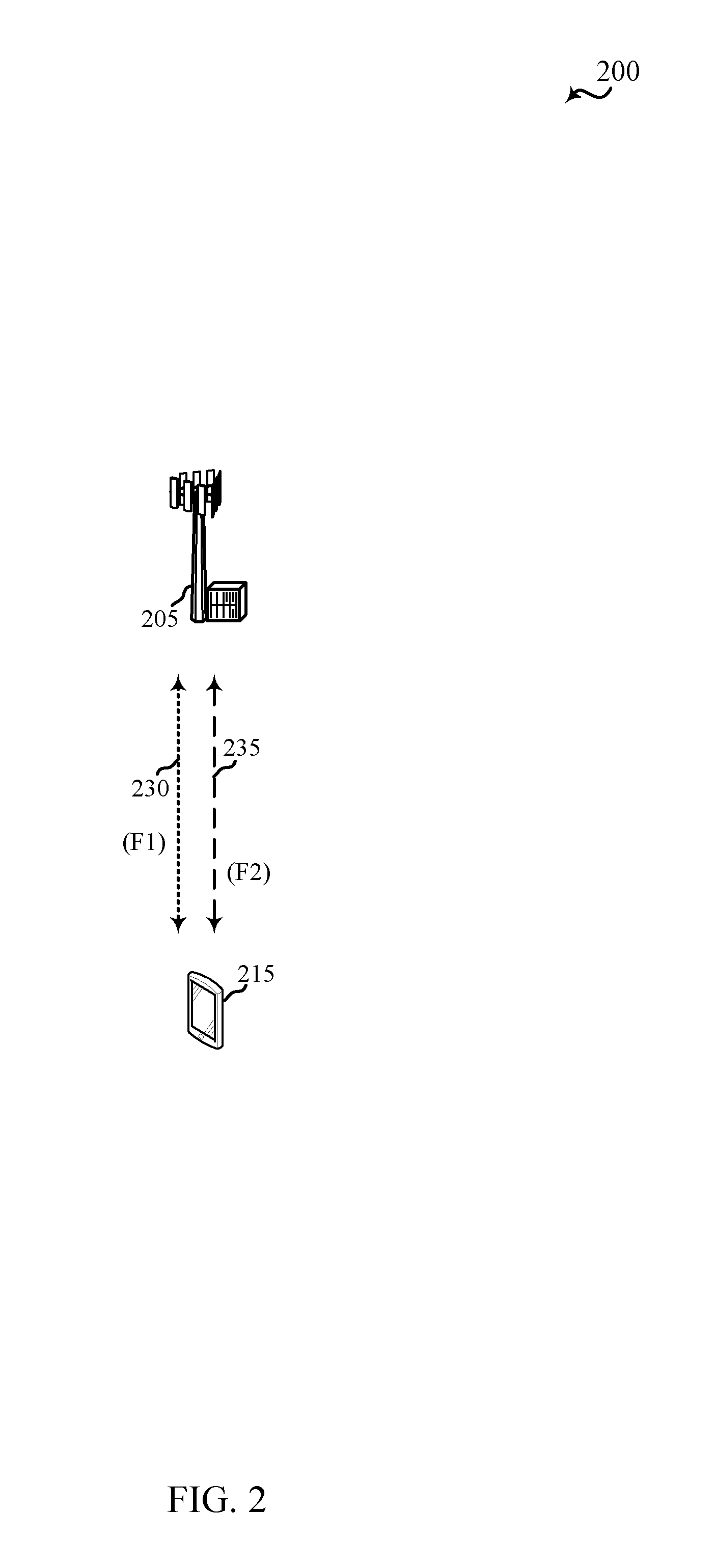Techniques for managing uplink transmissions in a shared radio frequency spectrum band and a dedicated radio frequency spectrum band
a technology of radio frequency spectrum and uplink transmission, which is applied in the direction of multiplex communication, wireless communication, orthogonal multiplex, etc., can solve the problems of data scheduling mechanisms, lte-advanced (lte-a) and lte-advanced (lte-a) not enabling a ue to request uplink resources in a particular radio frequency spectrum band, and achieve the effect of reducing the chan
- Summary
- Abstract
- Description
- Claims
- Application Information
AI Technical Summary
Benefits of technology
Problems solved by technology
Method used
Image
Examples
Embodiment Construction
[0054]Techniques are described in which a shared radio frequency spectrum band is used for at least a portion of communications over a wireless communication system. In some examples, the shared radio frequency spectrum band may be used for LTE / LTE-A communications. The shared radio frequency spectrum band may be used in combination with, or independent from, a dedicated radio frequency spectrum band. The dedicated radio frequency spectrum band may include a radio frequency spectrum band for which transmitting apparatuses may not contend for access (e.g., a radio frequency spectrum band licensed to particular users for particular uses, such as a licensed radio frequency spectrum band usable for LTE / LTE-A communications). The shared radio frequency spectrum band may include a radio frequency spectrum band for which transmitting apparatuses may contend for access (e.g., a radio frequency spectrum band that is available for unlicensed use, such as Wi-Fi use, a radio frequency spectrum ...
PUM
 Login to View More
Login to View More Abstract
Description
Claims
Application Information
 Login to View More
Login to View More - R&D
- Intellectual Property
- Life Sciences
- Materials
- Tech Scout
- Unparalleled Data Quality
- Higher Quality Content
- 60% Fewer Hallucinations
Browse by: Latest US Patents, China's latest patents, Technical Efficacy Thesaurus, Application Domain, Technology Topic, Popular Technical Reports.
© 2025 PatSnap. All rights reserved.Legal|Privacy policy|Modern Slavery Act Transparency Statement|Sitemap|About US| Contact US: help@patsnap.com



